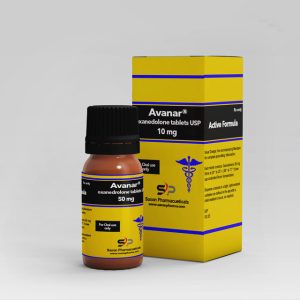Description
Buy Clomiphene Online
Clomiphene is a prescription medication that works by stimulating the ovaries to release eggs (ovulation). It is most commonly prescribed for women with conditions such as polycystic ovary syndrome (PCOS), anovulation (lack of ovulation), or unexplained infertility. Clomiphene is often the first-line treatment for women who are not ovulating regularly and who wish to become pregnant.
How Clomiphene Works:
Clomiphene works by blocking estrogen receptors in the brain, particularly in the hypothalamus. This disruption causes the brain to sense lower levels of estrogen, triggering the release of hormones like follicle-stimulating hormone (FSH) and luteinizing hormone (LH). These hormones are responsible for stimulating the ovaries to produce and release eggs.

Buy Clomiphene Online
Uses of Clomiphene
1. Ovulation Induction:
Female fertility drug is most commonly used to treat infertility in women who do not ovulate regularly. This includes conditions like:
- Polycystic Ovary Syndrome (PCOS): Women with PCOS often have irregular or absent ovulation, and Clomiphene helps to trigger ovulation.
- Hypothalamic Dysfunction: In some cases, the hypothalamus (a part of the brain) does not produce enough hormones to trigger ovulation. Clomiphene can help stimulate ovulation in these women.
- Unexplained Infertility: For women with no clear reason for infertility, Clomiphene can help improve ovulation and increase the chances of conception.
2. Male Infertility (Off-label Use):
Although Female fertility drug is primarily prescribed for women, it is sometimes used off-label for male infertility. It may help men with low sperm counts or other fertility issues by increasing levels of testosterone and stimulating the pituitary gland to produce more follicle-stimulating hormone (FSH), which in turn boosts sperm production.

Buy Clomiphene Online
Effectiveness of Clomiphene
Female fertility drug is highly effective for women who have irregular or absent ovulation. The chances of successful ovulation with Clomiphene are around 70-80%. However, not all women will become pregnant with this medication, and the success rate varies depending on various factors, including:
- The woman’s age
- The cause of infertility
- The presence of other health conditions
- How well the ovaries respond to Clomiphene
For women with PCOS, Clomiphene has been shown to be particularly effective in promoting ovulation. Approximately 60-80% of women with PCOS will ovulate after using Clomiphene. Among women who ovulate, around 30-40% will become pregnant within the first six months of treatment.
Dosage of Clomiphene
Typical Dosage for Women:
Female fertility drug is typically taken as an oral tablet, usually starting on day 5 of the menstrual cycle. The usual starting dose for women is 50 mg per day for five days. This dosage is commonly prescribed for the first cycle of treatment, but adjustments may be made depending on how the ovaries respond to the medication.
If ovulation does not occur with the initial dose, the doctor may increase the dose in subsequent cycles, typically to 100 mg or 150 mg per day.
Dosage Schedule:
- Day 1-5: Take 50 mg of Clomiphene orally each day.
- Cycle Monitoring: Ultrasounds and blood tests may be used to monitor the response of the ovaries and determine when ovulation occurs.
- Increasing Dosage: If ovulation does not occur with the initial dose, the dose may be increased, usually in increments of 50 mg per cycle.
For Men: fertility drug is prescribed off-label for men with infertility due to low sperm counts or low testosterone levels. The typical starting dose is 25-50 mg per day, but this can be adjusted depending on the individual’s response and testosterone levels.

Side Effects of Clomiphene
Like all medications, Female fertility drug may cause side effects. Some of the most common side effects include:
1. Hot Flashes: Hot flashes are one of the most common side effects of Clomiphene and affect about 10-20% of women who take the medication. This can include sudden feelings of heat, sweating, and flushing.
2. Ovarian Hyperstimulation Syndrome (OHSS): OHSS is a serious side effect that can occur in some women, especially when taking higher doses of Clomiphene. Symptoms of OHSS include abdominal bloating, pain, nausea, and vomiting. In severe cases, OHSS can lead to hospitalization.
3. Mood Swings and Emotional Disturbances: Clomiphene can affect mood and cause irritability, depression, or anxiety in some women. These emotional changes are typically temporary.
4. Visual Disturbances: Some women experience temporary visual disturbances, such as blurred vision or seeing spots. These effects are usually mild and resolve after stopping Clomiphene.
5. Nausea and Vomiting: Nausea is another common side effect of Clomiphene, though it typically resolves after the medication is discontinued.
6. Ovarian Cysts: Clomiphene can cause ovarian cysts to form, although these are typically benign and resolve on their own. If the cysts become painful, medical intervention may be required.
7. Multiple Births: Clomiphene increases the likelihood of twins or even higher-order multiples (triplets or more). This is because the medication stimulates the ovaries to release more than one egg.
Risks and Considerations
While Female fertility drug is generally safe for most women, there are a few considerations and potential risks to be aware of:
- Multiple Pregnancy: The increased likelihood of multiple pregnancies is one of the primary risks associated with Clomiphene. Multiple pregnancies carry additional risks to both the mother and the babies, such as preterm labor and gestational diabetes.
- Ovarian Cancer Risk: There has been some debate over whether Clomiphene increases the risk of ovarian cancer. Some studies suggest a slight increase in risk, especially in women who have taken Clomiphene for many years, though the overall risk remains low.
- Endometrial Cancer: Long-term use of Clomiphene has also been associated with a slightly higher risk of endometrial cancer, though this risk is generally low.
Women who are taking Female fertility drug should be closely monitored by their healthcare provider to minimize risks and ensure optimal outcomes.

Clomiphene vs. Other Fertility Treatments
Clomiphene vs. Letrozole: Letrozole (Femara) is another medication often used to induce ovulation, particularly in women with PCOS. Studies have shown that Letrozole may have a higher success rate in some women with PCOS and may be better tolerated than Clomiphene. However, Clomiphene remains a widely used first-line treatment due to its long track record of effectiveness.
Clomiphene vs. Injectable Hormones: For women who do not respond to Clomiphene, injectable fertility medications (e.g., gonadotropins) may be considered. These medications work in a similar way but are often stronger and more expensive. Injectable medications are typically used for women who are resistant to Clomiphene.
Clomiphene Dosage Guidelines
The dosage of Female fertility drug varies based on several factors, including the individual’s medical history, the condition being treated, and how well the body responds to the medication. Below are the standard guidelines for Clomiphene dosage:
Initial Dosage for Women:
For most women, the recommended starting dose of Clomiphene is 50 mg per day for 5 consecutive days. This dose is typically prescribed starting on day 3, 4, or 5 of the menstrual cycle. The exact timing is determined by the healthcare provider based on individual factors.
- Day 3, 4, or 5 initiation: The medication is usually started early in the menstrual cycle (after menstruation has ended) to encourage ovulation.
- Cycle monitoring: Your doctor will monitor your response to the medication, typically through blood tests (to measure hormone levels) and ultrasounds (to assess follicular growth).
Adjusting the Dosage:
If ovulation does not occur after the initial 50 mg dose, the dosage may be increased in subsequent cycles. Dosage adjustments typically follow this pattern:
- Increase to 100 mg per day: If ovulation does not occur after 50 mg, the dose can be increased to 100 mg per day for 5 days. This may be repeated in the following cycle if necessary.
- Maximum dose of 150 mg per day: If the 100 mg dose does not yield results, the dose can be raised to 150 mg per day for 5 days. This is the maximum recommended dose, and it should not be exceeded due to potential risks of ovarian hyperstimulation and other side effects.
It is crucial to monitor the response during each cycle. If ovulation is successful at a lower dose (50 mg or 100 mg), there’s no need to increase the dosage.
For Men:
fertility drug is occasionally prescribed off-label for male infertility, particularly in cases of hypogonadotropic hypogonadism (low sperm count due to insufficient stimulation of the testes). The typical dose for men is 25 mg to 50 mg per day. However, men should follow their doctor’s instructions regarding dosage based on their specific fertility issues.
Duration of Treatment:
Clomiphene is generally not recommended for long-term use. Most fertility experts suggest limiting Clomiphene use to 3 to 6 cycles. If ovulation does not occur after 3 cycles at the maximum dose, alternative treatments, such as injectable gonadotropins or assisted reproductive technologies (ART), may be considered.
3. Monitoring and Adjustments Based on Response
Effective monitoring is crucial when using Clomiphene, especially to avoid potential complications and ensure the treatment is working as intended.
Monitoring Ovulation:
To monitor whether Clomiphene is effective in stimulating ovulation, your doctor may suggest:
- Blood tests to measure hormone levels, such as estrogen, LH, and progesterone.
- Ultrasounds to assess follicular growth and monitor the number of follicles being produced.
- Ovulation predictor kits (OPKs) to check for a surge in LH, indicating ovulation is imminent.
Adjusting Dosage Based on Response:
If Clomiphene successfully induces ovulation in the first cycle, your doctor may continue with the same dosage in the following cycles. If ovulation occurs, but pregnancy does not, further cycles can be attempted with the same dose. However, if ovulation fails to occur, the dosage may need to be increased, and monitoring will continue.
If ovarian hyperstimulation (too many follicles) is detected, your doctor may adjust the dosage or recommend a break from treatment to avoid risks of multiple pregnancies (such as twins or triplets), which can increase the likelihood of complications.
Common Side Effects of Clomiphene
Like any medication, Clomiphene can cause side effects. While not everyone experiences these side effects, it is important to be aware of the common ones that may occur during treatment.
1. Hot Flashes
Hot flashes are one of the most commonly reported side effects of Clomiphene. This sudden feeling of warmth, often accompanied by sweating, can be uncomfortable and disruptive. Hot flashes are caused by changes in the body’s hormonal levels, which is a typical side effect of Clomiphene’s impact on estrogen receptors.
For most women, hot flashes tend to subside after completing the Clomiphene regimen. However, they can be bothersome during treatment, and some women may experience them even after stopping the medication.
2. Abdominal Bloating and Discomfort
Another common side effect of Clomiphene is abdominal bloating. This may occur as a result of the increased size of the ovaries and fluid retention. The stimulation of the ovaries can cause them to become swollen, which can lead to a sensation of fullness or discomfort in the abdominal area.
Abdominal bloating is typically mild and resolves after the treatment cycle. However, if bloating becomes severe or is accompanied by other symptoms, it is important to contact a healthcare provider for evaluation.
3. Nausea and Vomiting
Some women taking Infertility drug may experience nausea or vomiting. This side effect is less common than others, but it can still occur, especially during the initial stages of treatment. Nausea may be linked to the hormonal changes caused by Clomiphene.
To manage this, some women may be advised to take the medication at night or with food to minimize stomach upset. If nausea and vomiting become severe, it is essential to consult a healthcare provider.
4. Mood Swings and Emotional Changes
Female fertility drug can affect mood and emotional well-being. Women using Clomiphene may experience mood swings, irritability, or heightened emotions. This is believed to be due to the hormonal fluctuations caused by the medication, as Clomiphene works by influencing estrogen and other hormones.
These emotional changes can be challenging, especially for women who are already under stress due to infertility. It is important for individuals to communicate with their healthcare provider if they experience significant mood changes.
5. Headaches
Headaches are another side effect that some women may experience while takingInfertility drug . The exact cause of these headaches is not entirely understood, but they are thought to be related to the hormonal fluctuations induced by the medication. Headaches can range from mild to severe and can sometimes interfere with daily activities.
If headaches become persistent or severe, it is crucial to seek medical advice to rule out other potential causes and determine appropriate treatment options.
6. Breast Tenderness
Breast tenderness is a frequent side effect of Clomiphene. As Clomiphene stimulates hormone production, the breasts may become more sensitive or swollen. This discomfort can vary from mild to moderate and usually resolves after the completion of the treatment cycle.
Women who experience breast tenderness should discuss any concerns with their healthcare provider, especially if the discomfort is severe or persistent.
7. Ovarian Cysts
Infertility drug increases ovarian stimulation, which can sometimes lead to the formation of ovarian cysts. These cysts are typically benign and resolve on their own. However, in some cases, they can cause pain or discomfort and may require medical intervention.
While ovarian cysts are a known side effect of Clomiphene, they are generally not dangerous and are often monitored by the healthcare provider during treatment.
Serious Side Effects of Clomiphene
Although most of the side effects associated with Infertility drug are mild and temporary, there are some more serious risks that should not be ignored. If any of the following symptoms occur, it is important to contact a healthcare provider immediately.
1. Ovarian Hyperstimulation Syndrome (OHSS)
Ovarian Hyperstimulation Syndrome (OHSS) is a potentially serious condition that can occur when the ovaries become overstimulated, leading to swelling and fluid buildup. OHSS is rare but can cause symptoms such as severe abdominal pain, nausea, vomiting, shortness of breath, and rapid weight gain.
In severe cases, OHSS can lead to complications such as kidney failure or blood clots, which can be life-threatening. If any symptoms of OHSS are noticed, immediate medical attention is necessary.
2. Visual Disturbances
Some women taking Clomiphene may experience visual disturbances such as blurred vision, spots, or flashes of light. These symptoms are usually temporary but can be alarming. In rare cases, vision problems may persist after discontinuing the medication. If any vision changes occur, it is essential to notify a healthcare provider.
3. Ectopic Pregnancy
Infertility drug increases the chances of conception, but it also slightly raises the risk of an ectopic pregnancy. An ectopic pregnancy occurs when a fertilized egg implants outside the uterus, usually in one of the fallopian tubes. This condition can be life-threatening if not treated promptly.
Women who become pregnant while using Clomiphene should be monitored closely to ensure the pregnancy is progressing normally and is not ectopic.
4. Multiple Pregnancies
Clomiphene increases the likelihood of multiple pregnancies (twins, triplets, etc.). While multiple pregnancies are not necessarily harmful, they can pose additional risks to both the mother and the babies, such as preterm birth, gestational diabetes, and high blood pressure.
The risk of multiple pregnancies can be minimized by careful monitoring of ovarian response during treatment. Healthcare providers typically perform ultrasounds to monitor follicle growth and determine the best course of action.
Factors That Can Affect Clomiphene Side Effects
Several factors can influence the likelihood and severity of Female fertility drug side effects. These include:
- Dosage: Higher doses of Clomiphene may increase the risk of side effects, particularly ovarian hyperstimulation.
- Duration of Use: Prolonged use of Clomiphene may increase the risk of certain side effects, such as ovarian cysts and ovarian hyperstimulation syndrome.
- Age: Women over the age of 35 may be more likely to experience side effects and complications from Clomiphene treatment.
- Underlying Health Conditions: Conditions such as polycystic ovary syndrome (PCOS) or thyroid disorders may affect how a person responds to Clomiphene.
It is important for patients to discuss their medical history and any existing conditions with their healthcare provider to ensure Infertility drug is the right treatment for their needs.
Managing and Minimizing Clomiphene Side Effects
While some side effects of Female fertility drug are unavoidable, there are several steps patients can take to minimize their impact:
- Monitor Hormonal Levels: Regular blood tests can help healthcare providers monitor hormone levels and adjust the dosage if necessary.
- Stay Hydrated: Staying hydrated can help alleviate some of the side effects, such as bloating and nausea.
- Take Medication as Directed: Following the prescribed dosage and taking Clomiphene as directed can help reduce the likelihood of complications.
- Report Symptoms Early: If any severe or unusual symptoms occur, it is important to report them to a healthcare provider immediately for evaluation.
Conclusion
Female fertility drug is an effective and widely used medication for treating infertility, but like any medication, it comes with the risk of side effects. The most common side effects include hot flashes, abdominal discomfort, mood swings, and headaches. Serious side effects such as ovarian hyperstimulation syndrome and ectopic pregnancy are rare but require immediate medical attention if they occur.
Patients considering or currently using Clomiphene should work closely with their healthcare provider to monitor for side effects and adjust treatment as needed. With proper management, the benefits of Clomiphene can far outweigh the potential risks, helping many women achieve their goal of pregnancy.
If you are considering Clomiphene for fertility treatment, always consult with a qualified healthcare professional to determine the best approach for your unique circumstances.
















Reviews
There are no reviews yet.